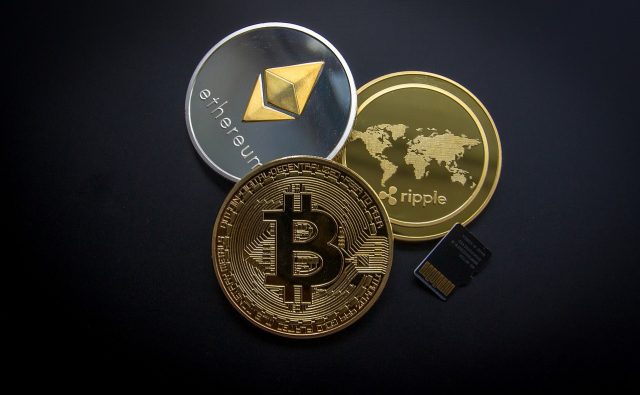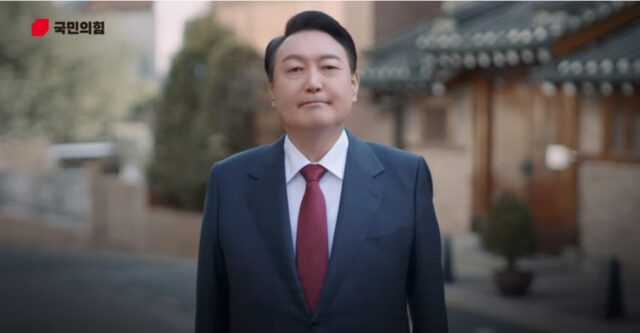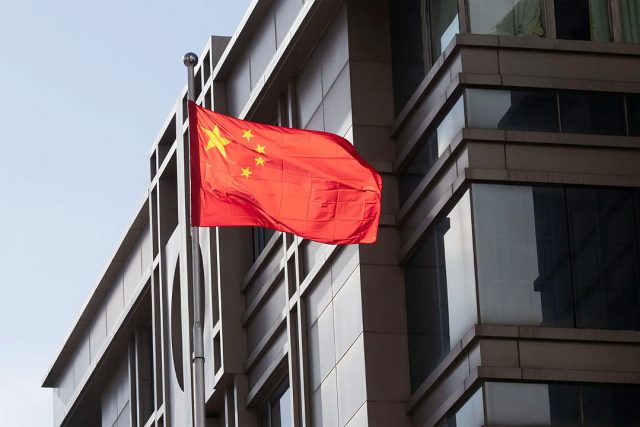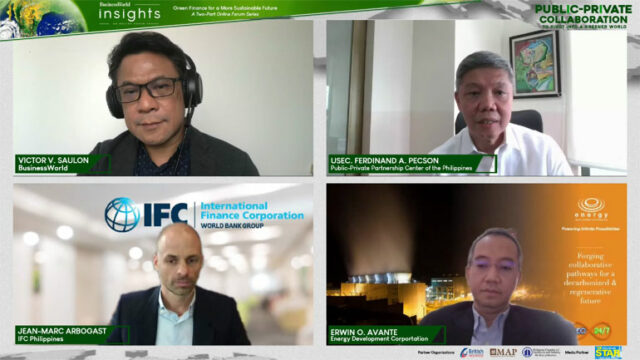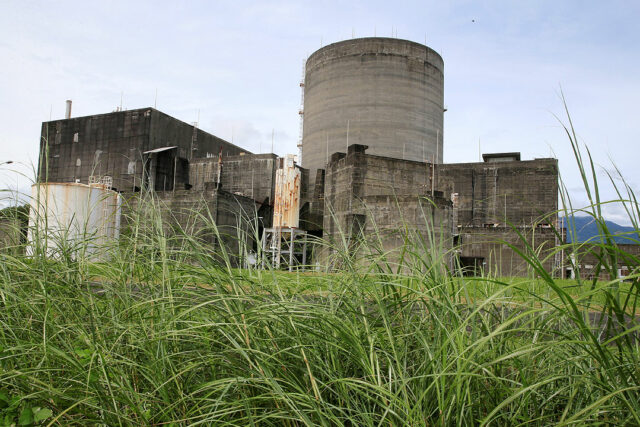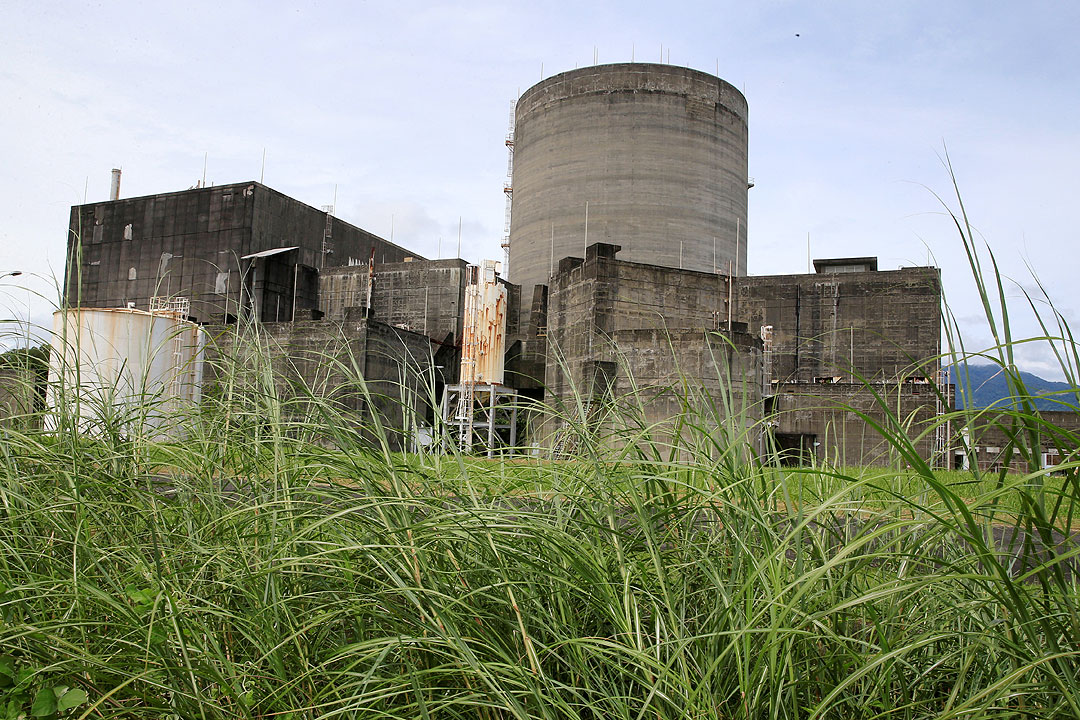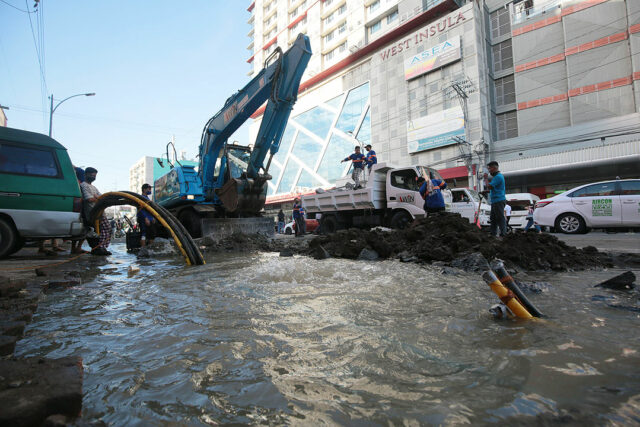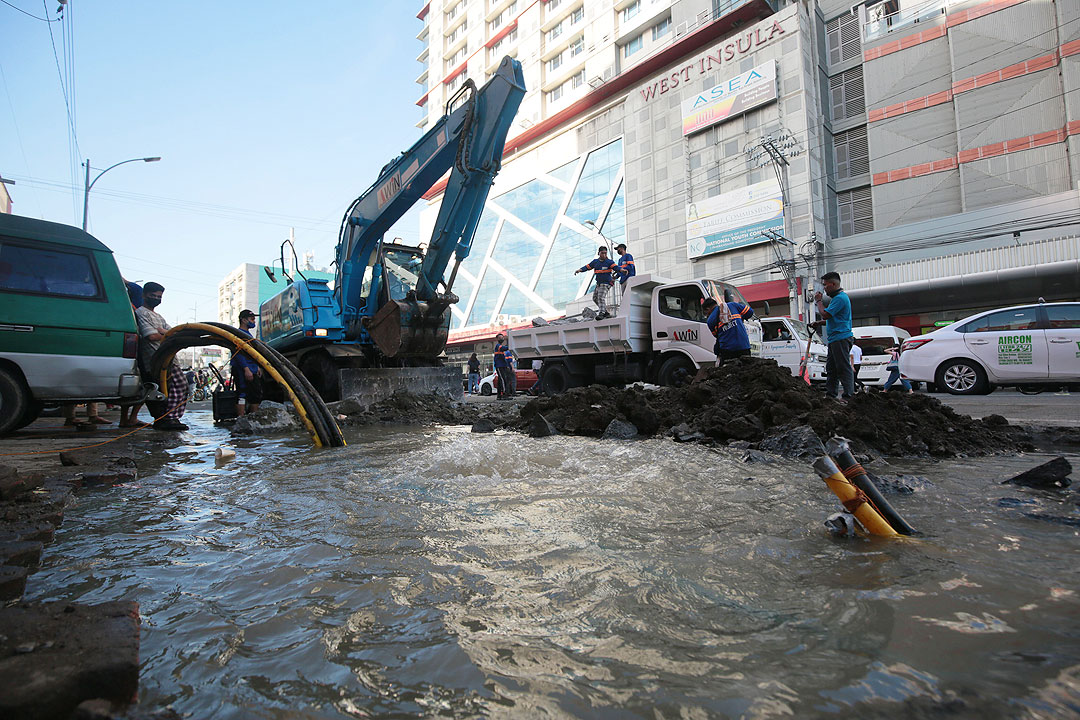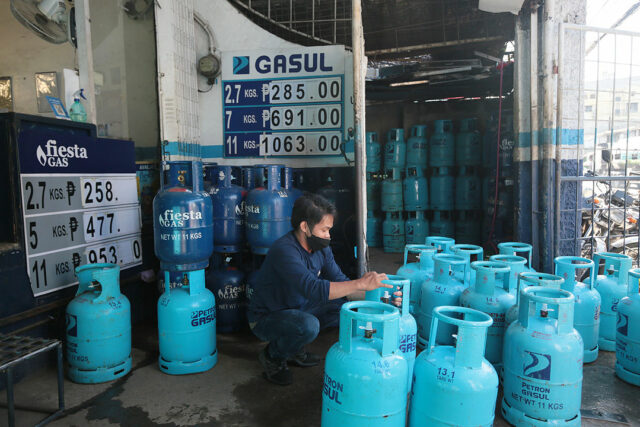By Bjorn Biel M. Beltran, Special Features Writer
The climate crisis has been dubbed as “the greatest threat to global health and security” of our time. And it will take a monumental collaborative effort between individuals, enterprises, governments, and corporations all over the world to address it.
Green finance could be key to accomplishing this feat. The World Economic Forum defines it essentially as any structured financial activity — a product or service — that’s been created to ensure a better environmental outcome. These consist of loans, debt mechanisms and investments that are used to encourage the development of green projects, minimize the impact on the climate of more regular projects, or do a combination of both.
The second leg of BusinessWorld Insights’ two-part series on “Green Finance for a More Sustainable Future,” with the topic “Public-Private Collaboration to Pivot into a Greener World,” gathered experts to discuss how public and private partnerships facilitated through green finance could lead the way to a more sustainable world.
Ferdinand A. Pecson, undersecretary and executive director of the Public-Private Partnership Center of the Philippines, began the discussion pointing out the need for the government to take a holistic approach to enacting new policies to meet the country’s sustainability goals.
“What we need on the government side is a whole-of-government approach; involving policy makers who set the rules for greenness and sustainability; project implementers who develop projects according to those rules; and oversight bodies and regulators who ensure that the private partners in a public-private partnership follow those rules,” he said.
Mr. Pecson said that much remains to be done to facilitate green and sustainable infrastructure in the Philippines. He pointed out the area of solid waste management and the potential of the country to convert waste pollution into renewable energy as an example.
Currently, the potential of the Philippines to develop waste-to-energy technology is hampered by several issues, among which is the uncertainty surrounding the resulting fuel product and whether it classifies as renewable energy and thus would benefit from government-issued incentives.
“Without this being put into law, as part of a legal framework, it will not be easy to encourage investors to put money in projects like this. My understanding is that investors are waiting for more clarity,” he said.
“Some of those rules are still being developed. There are deals as we speak that are in place, but they still have a long way to go before they become laws. But it is quite an exciting time in so far as laying the groundwork for green and sustainable infrastructure. Much still needs to be done, and this will require the efforts of multiple bodies working together,” Mr. Pecson added.
Jean-Marc Arbogast, country manager of the International Finance Corporation Philippines, agreed, saying that the country has been “faring quite well” in terms of creating regulatory and policy work to support green infrastructures.
“I think it’s been faring quite well, but there is still more to do especially on the adaptation side. A lot of infrastructure needs to be built in the coming decades, and it is an opportunity for building it greener and making sure it is sustainable,” he said.
Mr. Arbogast particularly noted the Bangko Sentral ng Pilipinas’ Sustainable Finance Framework and the Securities and Exchange Commissions’ Sustainability Reporting Guidelines for Publicly-Listed Companies as good initiatives to support the country’s sustainability effort.
However, he underscored the importance of bringing climate-centered finance into the mainstream through products like green bonds, as well as specific policies and regulations supporting public-private partnerships to quicken investment into these areas.
The private sector, he noted, is typically more innovative, efficient and cost-effective than the public sector, making it uniquely positioned to accelerate green investments at scale.
“We all know the green transition will be costly. It’ll be very expensive. Getting to net zero (greenhouse gas emissions) by 2050 will cost an extra $3.5 trillion a year, according to a new study by McKinsey, and surely for the Philippines that means an extra 10s of billions of dollars every year,” Mr. Arbogast said.
“And that’s a large chunk of the country’s GDP. Can the public sector do this alone? No, not in a post-COVID environment. The cost is too high for the government to bear it alone, and therefore the private sector has a real role to play.”
Enabling public-private collaboration
Echoing the sentiment, Erwin O. Avante, senior vice-president and chief financial officer of the Energy Development Corporation (EDC), cited the government’s Green Energy Auction Program (GEAP) as an example of a system that can drum up support from the private sector.
The GEAP is a market development support program which aims to provide additional options for renewable energy (RE) developers and generators, and promote a competitive setting of rates for RE supply in the country.
Mr. Avante noted that EDC, the Philippines’ leading renewable energy producer and the world’s largest integrated geothermal producer, is very interested in participating in the program and urged the government to create similar initiatives such as the GEAP to address other climate issues.
“The Green Energy Program allows consumers with electricity consumption of 100 kilowatts and above to source their power directly from renewable energy sources. In terms of market, it’s quite big. In Metro Manila alone we have about 6,000 megawatts of customers that are able to shift to the Green Energy Program. It is quite substantial. I think sooner or later we want this to go down to the retail level, 10 kilowatts for example, so that retail consumers will be able to participate in the program,” he said.
Around half of the country’s greenhouse gas emissions come from the energy sector, Mr. Avante said, highlighting the need for expediting a transition into an efficient, low-carbon or even zero-carbon system.
“It will take a herculean effort to avert the climate crisis in the future and ease our transition to a greener world. But I believe the energy sector, which I’m a part of, plays an important role. But with the right policies, enforcements, and incentives from the government, support of local and foreign financial institutions for sustainability financing, and the technical expertise and investment by the private sector, I think we can all collaboratively make into reality a decarbonized and regenerative future,” he said.
Spotlight is BusinessWorld’s sponsored section that allows advertisers to amplify their brand and connect with BusinessWorld’s audience by enabling them to publish their stories directly on the BusinessWorld Web site. For more information, send an email to online@bworldonline.com.
Join us on Viber to get more updates from BusinessWorld: https://bit.ly/3hv6bLA.





